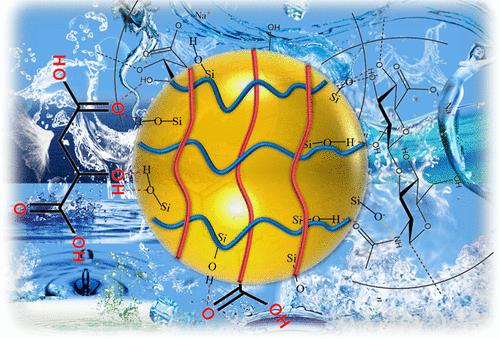在锂离子电池中使用具有交联网络的创新生物基粘合剂实现稳定的硅阳极
IF 3.9
2区 化学
Q2 CHEMISTRY, MULTIDISCIPLINARY
引用次数: 0
摘要
石墨阳极的容量接近理论最大值372 mA h g−1,硅基材料越来越多地补充了石墨阳极,硅基材料的容量高出10倍。然而,在循环过程中,硅的极端体积膨胀(>300%)对其实际部署构成了重大挑战。以往对粘结剂合成的研究往往比较复杂,不利于大规模实施。本研究将大分子多糖透明质酸钠与有机小分子苹果酸结合,在不需要任何外界触发的情况下,开发出一种创新的粘结剂HM。用硅在真空条件下热处理后,原位形成交联的网状结构。接触界面通过多个大分子氢键和化学相互作用建立了坚固的网络结构。因此,HM粘结剂表现出优异的机械性能,并有效地减少了硅颗粒的体积变化,从而有利于生成稳定的固体电解质界面。电化学表征表明,Si@HM电极具有优异的循环稳定性,循环100次后,在0.1 C和0.5 C条件下可保持1949 mA h g-1和1426 mA h g-1的高容量。此外,与传统粘结剂相比,采用HM粘结剂的硅阳极表现出更高的速率性能和更低的内阻,这代表了性能的显著进步。该研究为粘结剂设计提供了重要的视角,并为锂离子电池中硅阳极的商业利用提供了实验证据。本文章由计算机程序翻译,如有差异,请以英文原文为准。

Stable Silicon Anodes Enabled by Innovative Biobased Binder with Cross-Linking Network in Lithium–Ion Batteries
Graphite anodes, with their capacity nearing the theoretical maximum of 372 mA h g−1, are increasingly being complemented by silicon-based materials, which offer a 10-fold higher capacity. Nevertheless, extreme volume expansion (>300%) of Si during cycling poses significant challenges to its practical deployment. Previous studies on the synthesis of binders are often intricate and not conducive to large-scale implementation. In this study, an innovative binder, denoted as HM, is developed by combining the macromolecular polysaccharide sodium hyaluronate with the small organic molecule malic acid without the need for any external triggers. A cross-linked network structure is formed in situ after heat treatment with silicon under vacuum conditions. The contact interface establishes a robust network structure through multiple macromolecular hydrogen bonds and chemical interactions. Consequently, the HM binder exhibits exceptional mechanical properties and efficiently lessens the volumetric change of silicon particles, thereby benefiting the generation of a stable solid electrolyte interphase. Electrochemical characterization demonstrates that the exceptional cycling stability of Si@HM electrodes can maintain a high capacity of 1949 mA h g–1 at 0.1 C and 1426 mA h g–1 at 0.5 C after 100 cycles. Furthermore, silicon anodes employing the HM binder demonstrate superior rate performance and reduced internal resistance compared to those of conventional binders, representing a significant advancement in performance. This research provides crucial perspectives for binder design and experimental evidence for the commercial utilization of silicon anodes within lithium–ion batteries.
求助全文
通过发布文献求助,成功后即可免费获取论文全文。
去求助
来源期刊

Langmuir
化学-材料科学:综合
CiteScore
6.50
自引率
10.30%
发文量
1464
审稿时长
2.1 months
期刊介绍:
Langmuir is an interdisciplinary journal publishing articles in the following subject categories:
Colloids: surfactants and self-assembly, dispersions, emulsions, foams
Interfaces: adsorption, reactions, films, forces
Biological Interfaces: biocolloids, biomolecular and biomimetic materials
Materials: nano- and mesostructured materials, polymers, gels, liquid crystals
Electrochemistry: interfacial charge transfer, charge transport, electrocatalysis, electrokinetic phenomena, bioelectrochemistry
Devices and Applications: sensors, fluidics, patterning, catalysis, photonic crystals
However, when high-impact, original work is submitted that does not fit within the above categories, decisions to accept or decline such papers will be based on one criteria: What Would Irving Do?
Langmuir ranks #2 in citations out of 136 journals in the category of Physical Chemistry with 113,157 total citations. The journal received an Impact Factor of 4.384*.
This journal is also indexed in the categories of Materials Science (ranked #1) and Multidisciplinary Chemistry (ranked #5).
 求助内容:
求助内容: 应助结果提醒方式:
应助结果提醒方式:


